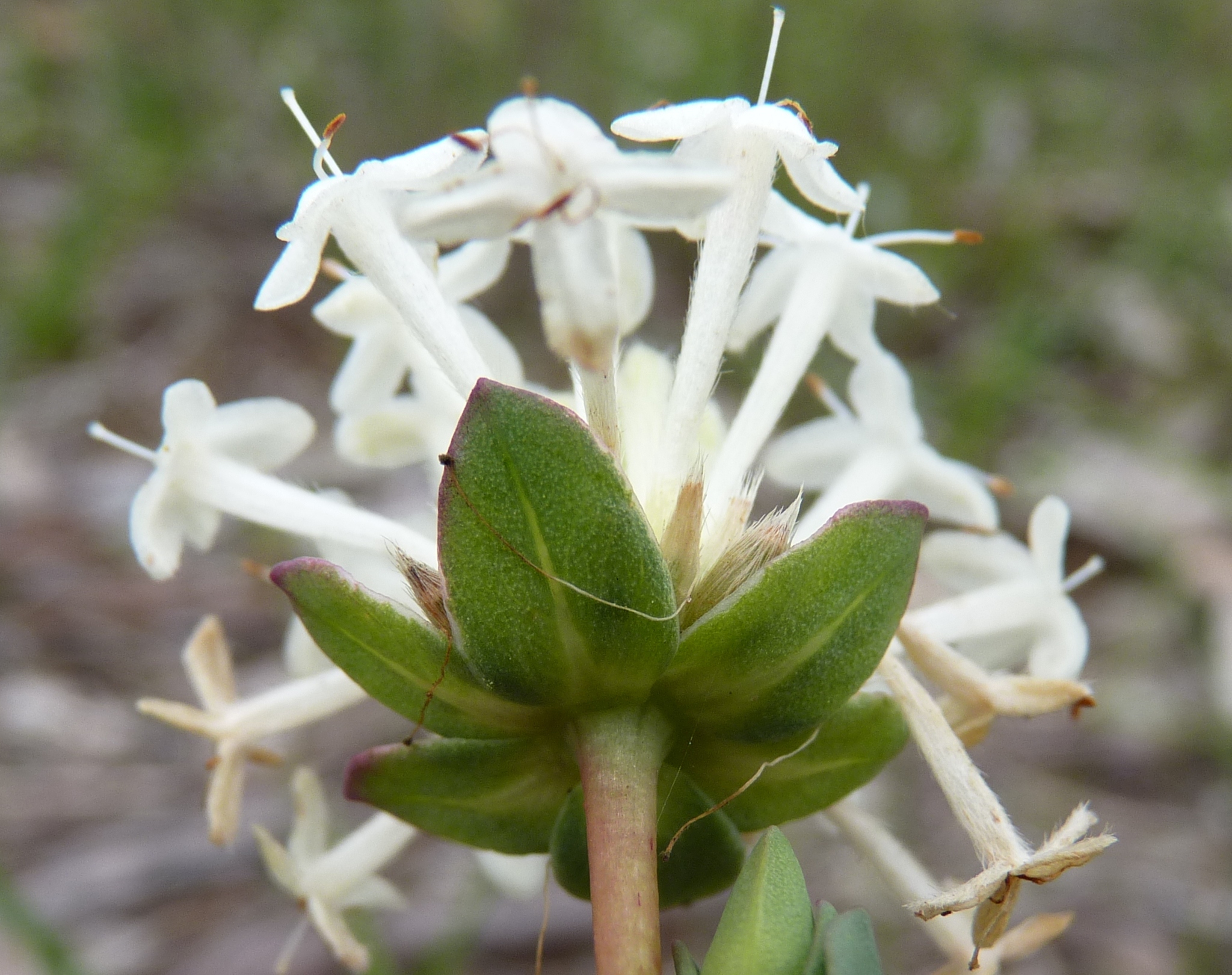
Shrubs or trees, occasionally herbs. Leaves alternate or opposite, simple, entire, often prominently veined; stipules absent or minute. Flowers mostly regular and bisexual with a large hypanthium. Flowers in terminal or axillary heads, racemes or spikes, rarely solitary. Calyx tubular; sepals usually 4–5, spreading, petal-like. Petals, when present, mostly 4–5, scale-like at the mouth of the calyx tube. Stamens mostly 2–10, often in 2 whorls and inserted at the mouth of the tube. Stamens mostly 2–10, often in 2 whorls and inserted at the mouth of the tube. Ovary superior; carpels 2–12, free, 1(– 2)-chambered, each containing 1 ovule. Style simple. Fruit a nut, berry, drupe or capsule.
Many species are known to cause stock poisoning.
The bark is used for paper manufactuing from some species of Daphne and Edgeworthia, and for string and rope species in Pimelea and Dais. The bark of some daphnes is used as a fish narcotic.
Calyx petal-like, petals absent or, if present, scale-like and, together with the stamens, inserted at the mouth of the calyx tube.
c. 45–50 genera and c. 890 species world-wide but predominantly in tropical and southern Africa and from South-east Asia to Australia; 9 genera with 105 species native to Australia.
Rye (1990).
Created by: Val Stajsic
Updated by: Val Stajsic, March 2018
